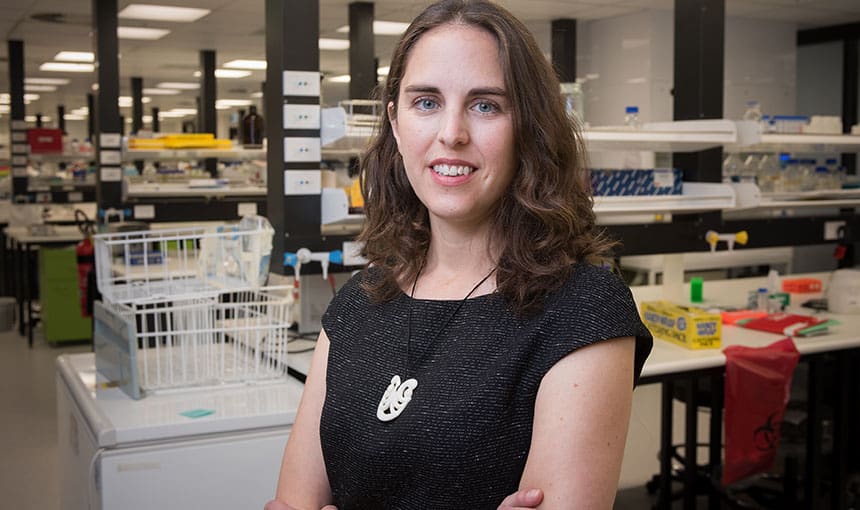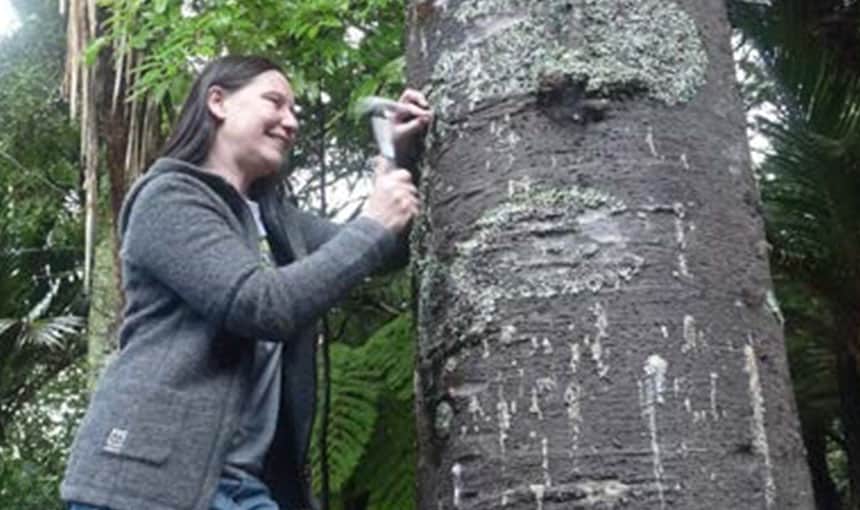Stopping Kauri Dieback in its Tracks
Selected native plant extracts may be able to attract and kill the spores of Phytophthora agathidicida – the pathogen causing kauri dieback, according to researchers.
The inventory of research outputs and resources can be found here:
overview Te Tirohanga Whānui
Led by Monica Gerth (Victoria University of Wellington), this project aims to find disease-fighting science solutions to protect New Zealand’s kauri forests through combining biochemical research with mātauranga Māori (Māori knowledge). The project is helping BioHeritage achieve its goal of creating a world-class biosecurity system for Aotearoa New Zealand.
Kauri dieback disease has been spreading through the kauri forests of Northern New Zealand for the last decade, resulting in large-scale restricted public access to the Waitakere Ranges.
P. agathidicida lives in the soil and infects kauri roots, damaging the tissues that carry nutrients and water within the tree and eventually starving it to death. There is currently no cure for the disease and not enough is known about how the disease spreads.
As part of the research into what attracts P. agathidicida spores to kauri roots, Monica and her team are identifying the chemical signals from kauri and other native plants that attract, repel or otherwise disrupt P. agathidicida zoospores, and testing how these affect movement of the zoospores through soils.
Zoospores are mobile spores, specialised for dispersal. They are released under flooding conditions and can swim towards plant roots. Once they reach a host root, they penetrate the root and initiate the infection.
Mātauranga Māori had a strong influence on which plant extracts were tested for their effect on soil-swimming zoospores – the reproductive stage of the plant pathogen that causes kauri dieback. This significantly advanced the project through early screening and the results provided crucial evidence.
The team is working closely with mātauranga Māori knowledge holders as part of their research, collaborating with kaitiaki and other experts in ngahere kauri to develop culturally appropriate strategies to help prevent the spread of kauri dieback.
project-summary
Dr Amanda Black is leading the collaboration with Māori as well using her knowledge of soil ecosystems to better understand how to stop the pathogen causing kauri dieback. She is also using her strong connections to iwi, kaitiaki and Māori researchers, and the kauri dieback programme Tāngata Whenua Rōpū to work more closely with Kāhui Māori member Kevin Prime and Waitangi Wood to blend mātauranga Māori into the research.
Partnering with Māori during the research helps to ensure that any treatment undertaken aligns with tikanga (Māori customs and culture).
An essential step in developing strategies to control kauri dieback disease is understanding the interactions between Phytophthora agathidicida and kauri as its host plant.
The overall goal of this research is to prevent P. agathidicida from spreading to uninfected trees. The research team’s hypothesis is that infection can be prevented by interfering with the chemotactic responses of this pathogen.
Some Phytophthora species, such as the pine pathogen P. pluvialis, produce airborne spores that infect leaves. In contrast, P. agathidicida and other root rot Phytophthora use mobile zoospores to infect the roots of their hosts.
Phytophthora zoospores travel through waterlogged soil and, once they have located a plant root, they infect the plant by creating a cyst on the surface. The research team is investigating how the pathogen moves through soils and landscapes in response to a chemical stimulus.
highlights Ngā Mahi Whakahirahira
Early results of the research indicate that some native plants show signs of attracting the spores.
Further investigation is needed, but the hope is that native plants may provide long-term solutions to the kauri dieback epidemic, and that this research provides new tools to protect New Zealand’s kauri forests.
Looking for more information?
If you’re looking for any outputs (papers, data etc) from this project that you don’t see on this page please visit our data repository.
Team Members Ngā kaimahi
- Monica Gerth; Victoria, University of Wellington


